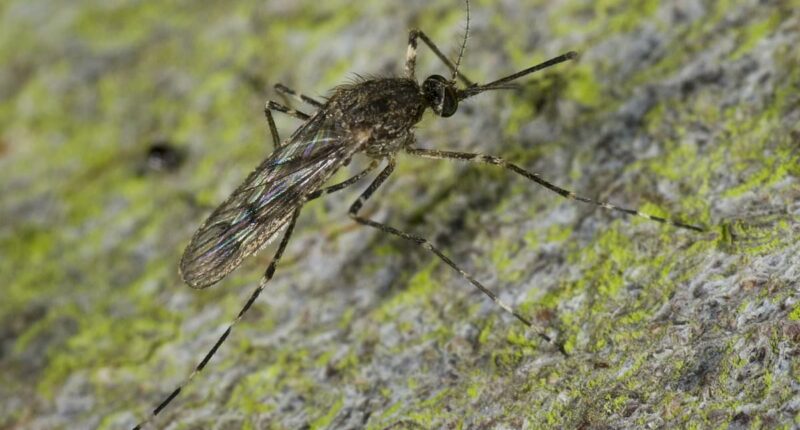Share this @internewscast.com
For the first time, mosquitoes have been discovered in Iceland, marking a significant expansion of one of the planet’s most dangerous insects.
Experts caution that these mosquitoes are adapting as they push into Iceland, managing to endure colder climates, utilizing man-made environments for breeding, and completing their life cycles in a land that was once unwelcoming.
This emergence poses a new potential risk to both humans and ecosystems that have not previously dealt with these insects. With this discovery, Antarctica remains the sole continent free of these vector-carrying pests.
The initial sighting occurred on October 16, reported by Björn Hjaltason, an insect enthusiast in Kjós, who shared his find of an unusual fly on a Facebook group.
After capturing the insect, Hjaltason identified it as a female mosquito. Confirmation came from entomologists at the Natural Science Institute of Iceland, who verified that three mosquitoes—two females and a male—were caught using traps baited with red wine, originally intended for moths.
The presence of mosquitoes in Iceland is linked to the broader impacts of global warming, as the nation’s climate warms due to persistent warm air currents from the south.
Higher heat accelerates the development of mosquitoes, increasing survival rates and extending the mosquito season, while precipitation and humidity create ideal conditions for breeding and population growth.
Scientists cautioned that the mosquitoes’ presence could have broader ecological and health implications. Mosquitoes are vectors for deadly diseases, including malaria, dengue and chikungunya, although Iceland has no history of outbreaks.

Since arriving in Iceland, the mosquitoes, which are Culiseta annulata, have demonstrated their remarkable adaptability. Pictured is a Culiseta annulata, but not in Iceland
The exact way these pests arrived in Iceland remains unknown, but scientists suggest they may have traveled aboard ships or hidden inside transported containers, CNN reported.
It’s unclear how the mosquito arrived in Iceland, but theories include the possibility it came via ships or containers. Further monitoring will be needed in the spring to see whether the species can survive the winter and “truly become established in Iceland,” Alfreðsson said.
Since arriving, the mosquitoes, which are Culiseta annulata, have demonstrated their remarkable adaptability.
The species has exploited human-made water sources, such as buckets, rain barrels, cisterns and flowerpots, to lay eggs in a region where natural stagnant water is scarce.
Their life cycles are timed to take advantage of Iceland’s brief summer season, completing development quickly before colder months return.
Behaviorally, these mosquitoes remain stealthy and opportunistic, as they feed mainly at dawn, dusk and night, minimizing detection while reproducing effectively.
Their eggs can also survive in hidden water sources for extended periods, allowing populations to expand quietly and persist through environmental challenges.
This combination of cold tolerance, reproductive flexibility and stealthy feeding habits illustrates how the species is effectively adapting to a previously hostile ecosystem.

Scientists cautioned that the mosquitoes’ presence could have broader ecological and health implications. Mosquitoes are vectors for deadly diseases, including malaria, dengue and chikungunya, although Iceland has no history of outbreaks

The discovery means mosquitoes are now found everywhere in the world except for Antarctica
Entomologists cautioned that while Iceland currently has no mosquito-borne disease outbreaks, the insects’ ability to thrive in new environments demonstrates the potential for future health risks if pathogens are introduced.
Their presence may also alter local ecosystems, providing a new food source for predators while competing with native insects for resources.
Citizen scientists have played a key role in monitoring the spread of mosquitoes, as Hjaltason’s observation exemplified how public reporting can help track populations and alert authorities to emerging threats.
Apps like iNaturalist, Mosquito Alert, and NASA’s GLOBE Observer allow the public to contribute data on sightings, helping scientists document the insects’ ongoing adaptation and expansion.
Iceland’s mosquito invasion underscores a larger global pattern: warming temperatures are enabling mosquitoes to survive in regions once considered safe.
The species’ ability to exploit new habitats, reproduce efficiently, and survive harsher climates shows just how effectively it is evolving to colonize previously inaccessible territories.








